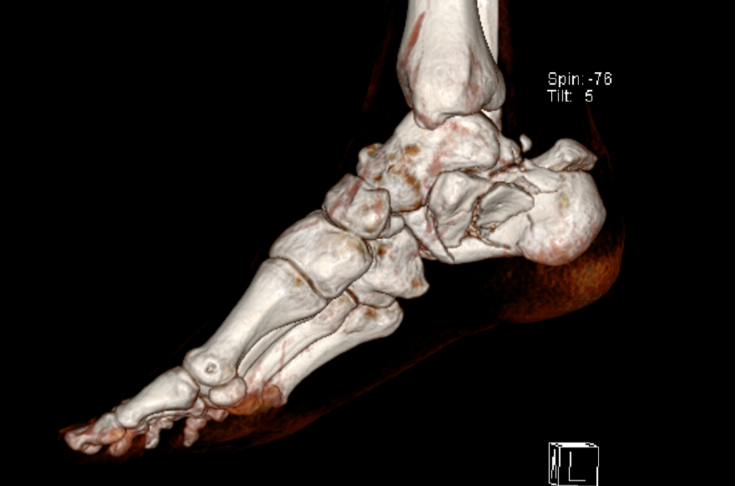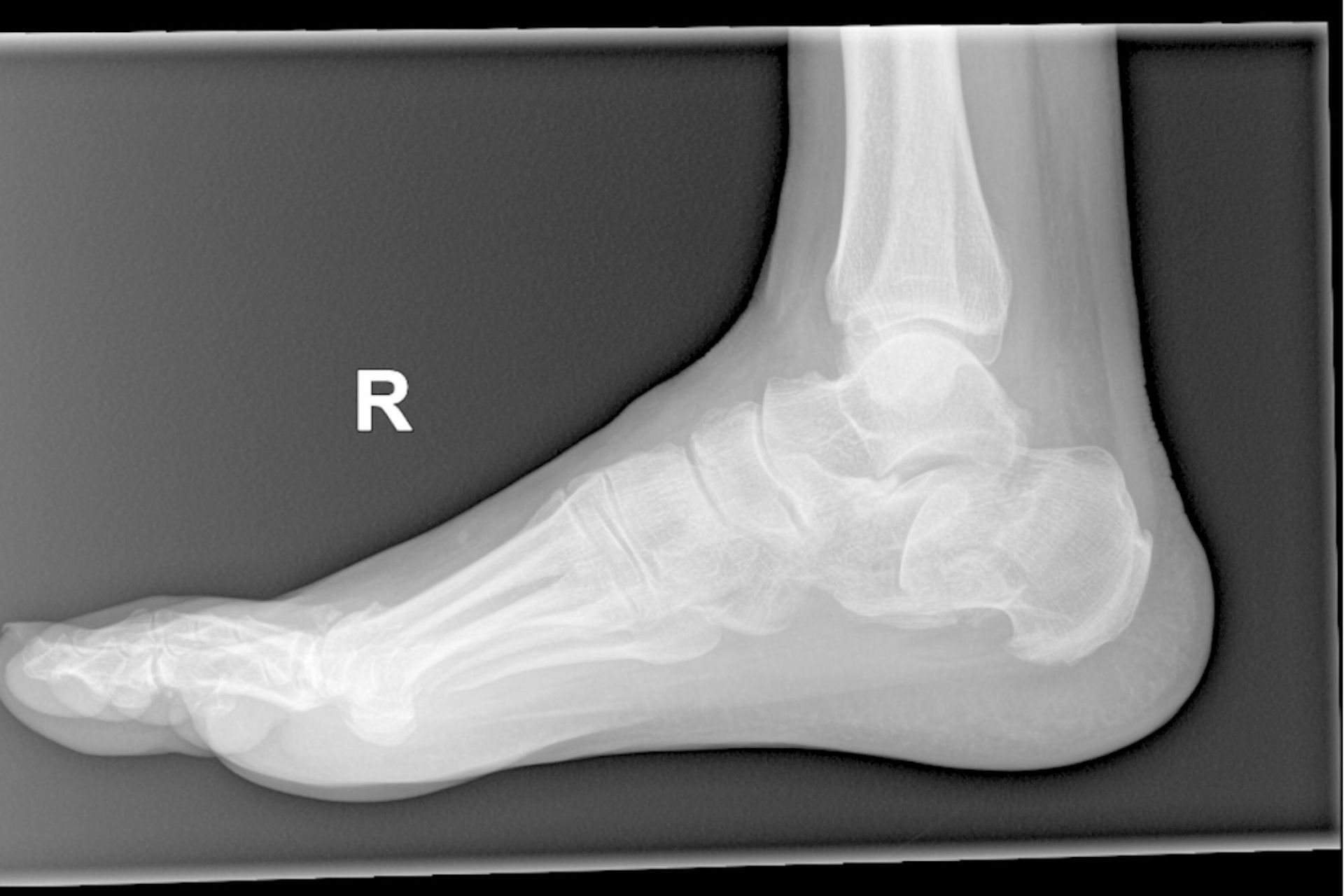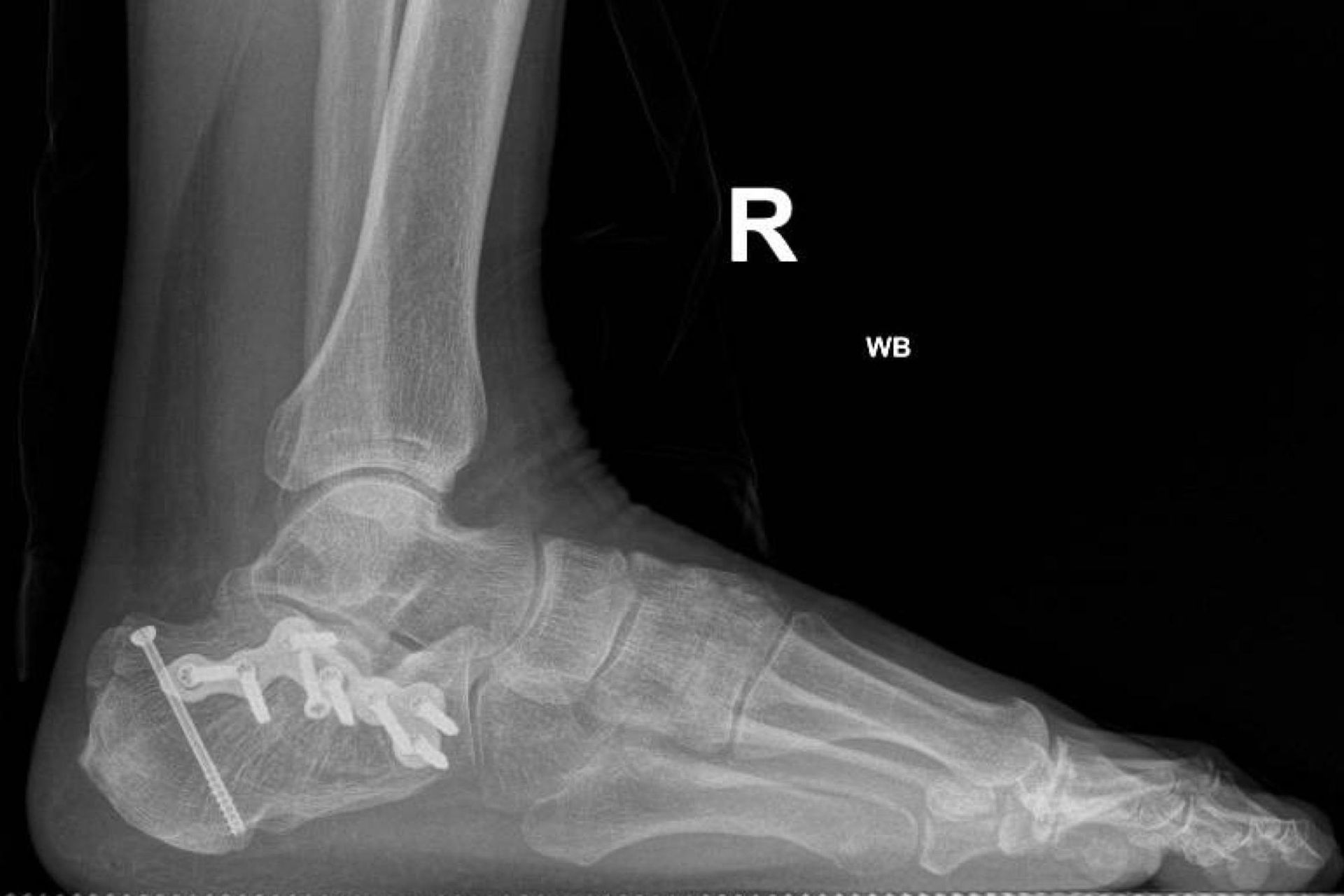Calcaneal Fractures
What Are Calcaneal Fractures?
The calcaneum is the largest bone in the foot.
It is where the Achilles tendon attaches, and the bone forms the heel. A fracture is a break in the bone. Calcaneal fractures can range from minor breaks to life-changing injuries to the joint below the ankle, requiring surgery and prolonged rehabilitation. The main long-term difficulties after a calcaneal fracture include ongoing pain, abnormal foot and heel shape, difficulty in shoe wear, difficulty mobilising, and arthritis of the subtalar joint (the joint below the ankle joint).

Impact of Calcaneal Fractures on Anatomy and Health
Calcaneal fractures can significantly affect the anatomy and functionality of your foot. Some key impacts include:
- Structural Changes: Severe fractures may alter the normal shape of the heel, causing deformities such as a widened or flattened heel.
- Loss of Mobility: The heel’s primary role in weight-bearing and walking can be compromised, making standing and walking painful or difficult.
- Joint Damage: The calcaneus is closely connected to the subtalar joint, which is crucial for foot movement. A fracture may damage this joint, leading to arthritis or stiffness.
- Soft Tissue Injuries: Surrounding ligaments, tendons, and skin can also be damaged during a fracture, complicating recovery.
- Chronic Pain: Without proper treatment, long-term complications such as chronic pain, swelling, and difficulty in wearing shoes may occur.
Risk Factors for Calcaneal Fractures
Certain groups are more susceptible to calcaneal fractures, including:
- Individuals Engaged in High-Risk Activities:
- Construction workers or roofers who work at heights.
- Athletes participating in high-impact sports such as rock climbing or gymnastics.
- Older Adults: Aging reduces bone density, making bones more prone to fractures during falls.
- People with Osteoporosis: Weakened bones due to low bone density increase the risk of fractures.
- Motor Vehicle Accident Victims: The high force involved in accidents can lead to calcaneal fractures.
Causes of Calcaneal Fractures
Calcaneal fractures are primarily caused by:
- Trauma:
- Falls from significant heights directly onto the heel.
- High-speed car accidents where the heel is impacted against the floorboard.
- Sports Injuries:
- Sudden, high-impact forces during activities like long jumping or sprinting.
- Repetitive Stress:
- Overuse injuries, especially in athletes, may lead to stress fractures of the calcaneus.
- Weakened Bones:
- Medical conditions like osteoporosis or prolonged corticosteroid use can predispose the calcaneus to fractures with minimal trauma.
Symptoms of a Calcaneal Fracture
Calcaneal fractures typically present with the following symptoms after an injury/fall:
- Pain and swelling over the heel bone
- Difficulty walking and taking weight through the foot
- Corns or calluses developing where the toes rub together or overlapping
Prevention of Calcaneal Fractures
While not all calcaneal fractures are avoidable, taking the following steps can reduce your risk:
- Use Proper Safety Equipment:
- Wear protective footwear at workplaces prone to falls or heavy objects.
- Use appropriate climbing or sports equipment during high-risk activities.
- Practice Safe Behaviors:
- Use ladders, scaffolding, and climbing equipment correctly.
- Avoid jumping from high places unnecessarily.
- Strengthen Bones:
- Maintain good bone health through a diet rich in calcium and vitamin D.
- Engage in weight-bearing exercises to enhance bone strength.
- Prevent Falls:
- Install railings and anti-slip mats in areas prone to falls.
- Ensure proper lighting in walkways and stairs.
- Treat Underlying Conditions:
- Manage osteoporosis or other conditions that weaken bones with medications and lifestyle changes.
- Stretch and Condition:
- Warm up and stretch before physical activities to prevent overuse injuries and stress fractures.
Types of Calcaneal Fractures
Calcaneal fractures can be classified based on the severity and location of the break. The main types include:
- Intra-articular Fractures: These fractures involve the subtalar joint, where the calcaneus meets the talus. They are more complex and account for most calcaneal fractures.
- Extra-articular Fractures: These occur outside the subtalar joint and usually involve the body, tuberosity, or anterior process of the calcaneus. They are often less severe.
- Open Fractures: In these cases, the bone pierces through the skin, increasing the risk of infection and requiring immediate medical attention.
- Closed Fractures: The skin remains intact, which reduces the risk of complications but still requires prompt treatment.
- Stress Fractures: These are small cracks in the calcaneus caused by repetitive strain and are more common in athletes or individuals with weakened bones.
Diagnosis of a Calcaneal Fracture
Calcaneal fractures usually occur after an injury. Other injuries may need to be identified and treated. Diagnosis typically involves a clinical examination of the foot, an X-ray, and a CT scan.
Management and Treatment of Calcaneal Fractures
Management of calcaneal fractures can vary from non-operative measures to emergency surgery.
Non-operative measures include:
- Rest
- Elevation
- Compression with a Tubigrip or bandage
- Ice
- Camboot
- Pain relief
- Blood thinners to prevent deep vein thrombosis (DVT)
Severe fractures often require surgery to improve the shape of the calcaneum and the joint (see Calcaneal Fracture Surgery (ORIF)). Even after surgery, arthritis may develop in the subtalar joint, and the foot may always feel different from before the injury. The surgery aims to align the foot shape, allow for easier shoe wear, and slow the progression of arthritis.


What if Calcaneal Fractures are Untreated?
Leaving a calcaneal fracture untreated can lead to several complications, including:
- Chronic Pain: Untreated fractures can result in persistent pain, especially during weight-bearing activities.
- Deformity: The heel may become flattened or widened, affecting gait and footwear comfort.
- Arthritis: Damage to the subtalar joint can lead to post-traumatic arthritis, causing long-term stiffness and discomfort.
- Reduced Mobility: Without treatment, the foot's range of motion and overall functionality may be significantly impaired.
- Soft Tissue Damage: Ongoing swelling and improper healing may damage surrounding tendons, ligaments, and nerves.
- Infection: For open fractures, untreated wounds can become infected, potentially leading to serious complications.
Proper diagnosis and timely treatment are essential to prevent these long-term effects and ensure optimal recovery.
Contact Us
If you want more information or have any questions or problems, please contact Dr Graff at admin@christygraff.com or call the rooms at 0493 461 133.
